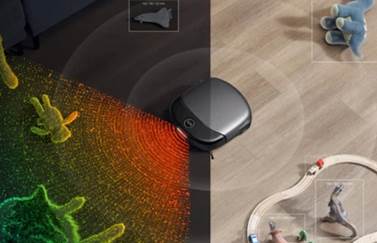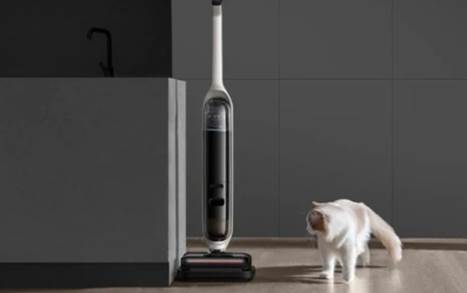Pet
owners know the struggle of keeping floors clean. From muddy paw prints to
unexpected accidents, pets bring joy—and messes. Traditional mops have been the
go-to solution for years, but steam mops promise deeper sanitization without
harsh chemicals. The challenge is deciding which tool truly tackles pet-related
stains, odors, and bacteria effectively. Each has strengths and weaknesses
depending on your home’s needs. If you’ve ever wondered whether steaming is
worth the investment or if your old mop still does the job, this article breaks
down the pros, cons, and key considerations. In this article, we’ll compare
steam mops and traditional mops to help you make the best choice for your
pet-friendly home.

Are Steam Mops Worth It for Pet Owners?
Deep Sanitization (Kills Bacteria & Odors)
One
of the biggest advantages of steam mops is their ability to sanitize floors
without chemicals. High-temperature steam (typically over 200°F) kills most
bacteria, viruses, and allergens lurking in pet messes. This is especially
useful for homes with puppies or older pets prone to accidents. Unlike
traditional mopping, which often just spreads germs around, steam penetrates
grout lines and porous surfaces, eliminating odors at the source. If your dog
has ever had an accident on tile or laminate, you know how lingering smells can
be. Steam cleaning breaks down organic residues more effectively than soap and
water alone. That said, steam mops aren’t magic—they work best with consistent
use. For severe stains, pre-treating might still be necessary.
Chemical-Free Cleaning (Safe for Pets)
Many
pet owners worry about chemical residues harming their furry friends. Harsh
detergents can irritate paws or cause health issues if licked off floors. Steam
mops eliminate this concern since they rely solely on water vapor. This makes
them ideal for households with curious pets who explore with their noses and
tongues. Even “pet-safe” cleaners may leave behind traces, whereas steam
provides a truly non-toxic clean. Parents of both pets and small children
particularly appreciate this feature. There’s no need to block off rooms after
mopping or worry about accidental exposure. However, steam mops do require
distilled water in some models to prevent mineral buildup, adding a minor extra
step. Overall, if you prioritize a chemical-free home, steam cleaning is a
compelling choice.

Limitations on Floor Types (Risk to Hardwood?)
While
steam mops excel on tile, vinyl, and sealed laminate, they can damage certain
floors. Excessive moisture and heat may warp hardwood or loosen glue in some
engineered floors. Manufacturers often warn against using steam on unsealed
wood or wax-finished surfaces. If your home has mixed flooring, you’ll need to
check compatibility or use alternative methods in sensitive areas. Another
consideration is drying time. Steam mops leave floors slightly damp, which
isn’t ideal for spaces where pets might slip or track wet paw prints.
Traditional mops, especially microfiber ones, can achieve near-dry results
faster. For pet owners with delicate flooring, weighing these trade-offs is
essential before investing in a steam system.
Do Traditional Mops Still Work Well for Pet Hair and
Stains?
Floor-Type Versatility
Traditional
mops—whether string, sponge, or microfiber—work on almost any floor. Hardwood,
stone, laminate, and vinyl can all handle damp mopping if the right cleaner is
used. This flexibility is a major plus for homes with varied flooring. Spills
can be spot-cleaned quickly without worrying about heat damage, making them
convenient for frequent, light cleanups. Microfiber mops, in particular, trap
pet hair and dander effectively. They’re also machine-washable, reducing waste
compared to disposable pads. However, traditional mops struggle with deep grime
compared to steam. If your pets bring in heavy dirt or have frequent accidents,
you might find yourself mopping more often to maintain cleanliness.
Chemical Residue Concerns
Most
traditional mops require cleaning solutions, which can leave behind sticky
residues attracting more dirt over time. Some products contain ammonia or
bleach, which are harmful to pets if ingested. Even natural cleaners may leave
a scent that irritates sensitive animals. Rinsing thoroughly helps, but it’s an
extra step many busy pet owners skip. For those who prefer traditional mopping,
opting for pet-safe detergents and changing water frequently is key. Yet,
compared to steam, this method demands more vigilance to ensure a pet-friendly
environment.
Labor-Intensive for Frequent Cleanups
Pets
create daily messes—tracked-in mud, shed fur, and occasional accidents.
Traditional mopping involves filling buckets, wringing mop heads, and repeated
rinsing, which becomes tedious over time. Steam mops, with their one-tank
systems and quick heating, streamline the process. If you have multiple pets or
a large home, the physical effort of traditional mopping can feel overwhelming.
Steam mops reduce strain with lighter designs and no heavy lifting. Still,
traditional mops win for quick touch-ups since they don’t require
preheating.
What Should Pet Owners Consider Before Choosing?
Your Flooring Type (Tile vs Hardwood vs Laminate)
Your
floors dictate which mop works best. Steam is unbeatable for tile and sealed
surfaces but risky for hardwood. Traditional mops are safer for delicate floors
but may lack sanitizing power. Assess your home’s primary flooring before
deciding. For laminate, check manufacturer guidelines, as excess moisture can
cause warping.
Pet Mess Frequency (Puppy Accidents vs Shedding)
High-traffic
pet areas benefit from steam’s deep clean, while light shedders might do fine
with traditional mopping. Puppy owners should prioritize sanitization, whereas
households with low-mess pets can save with a basic mop. For stubborn pet
stains, a steam mop with a scrub attachment can be a game-changer.
Allergies & Air Quality Needs
Steam
mops reduce allergens better by killing dust mites and mold. If allergies are a
concern, the extra investment pays off. Traditional mopping with HEPA-filtered
vacuums can also help but requires more effort. Pairing a steam mop with an air
purifier can further improve indoor air quality.
Conclusion
The
steam mop vs regular mop debate depends on your home’s needs. Steam mops excel in
sanitization and chemical-free cleaning, while traditional mops offer
versatility and simplicity. For pet owners with tile floors or allergy
concerns, steam is ideal. Those with mixed flooring or minimal messes may
prefer traditional options. If you seek
a powerful, hassle-free solution, consider eufy’s steam mops—their advanced
features tackle tough pet stains while keeping your home safe. No matter your
choice, maintaining a clean, pet-friendly home is now easier than ever.
